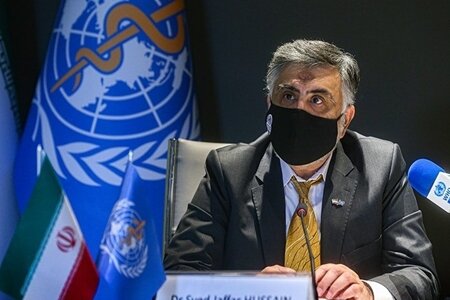Iran’s studies on climate change among world’s most reliable: WHO

TEHRAN – The World Health Organization representative to Iran, Jaffar Hussain, has said Iran's studies on climate change are among the most reliable in the world.
He made the remarks at the meeting on “improving energy consumption in the healthcare sector in response to climate change” which was held at the Ministry of Health on Tuesday and attended by the United Nations Industrial Development Organization (UNIDO).
The government of Iran, in cooperation with us and UNIDO, is carrying out a joint project about the results of weather and climate change in the field of health, which fortunately has made good progress so far, Hussain further stated.
Iran has adhered to its global commitment to reduce its carbon footprint in the medium and long term.Stating that this project is being piloted in Golestan and Kohgiluyeh-Boyer Ahmad provinces, he said that a workshop on the same topic was held in Golestan province not long ago, showing the effective efforts.
The Secretary General of the United Nations Antonio Guterres and the Director of the World Health Organization Tedros Adhanom Ghebreyesus, in their latest joint announcement regarding climate change, emphasized giving serious attention to issues such as air pollution and water contamination as consequences of climate change, he explained.
Iran has conducted quality studies in the field of environmental health and work based on the effects of the environment on health, which is considered one of the most reliable studies in the world in this field, he also highlighted, referring to the lack of such projects in other countries.
Attention to the social components affecting health in all sectors will help to take efficient steps toward tackling climate change. Fortunately, Iran has adhered to its global commitment to reduce its carbon footprint in the medium and long term, he also said.
Pointing to the complications of Iran's international relations due to sanctions, he noted that despite such problems, Iran has shown its commitment to carry out a joint project with the WHO and UNIDO, and this is the best service that can be provided in line with the health development.
Climate change and health hazards
According to a report by WHO, Iran is amongst the most vulnerable countries to climate change due to its geographic, economic, and climatic characteristics. For instance, a large area of the country is susceptible to floods, while changing trends in precipitation have also led to droughts and forest fires.
Climate change increases the intensity and frequency of extreme weather events including drought and floods. Rising sea levels can lead to storm surges, coastal erosion, saltwater intrusion of groundwater aquifers, and ecosystem disruption. These events can lead to population displacement and affect water and sanitation infrastructure and services, contaminating water with fecal bacteria (e.g. E. coli, salmonella) from runoff or sewer overflow. Increasing temperatures and precipitation can also lead to water contaminated with Vibrio bacteria or algae blooms.
Water resources are expected to be less reliable in the future in Iran, with an observed 50 percent decrease in surface runoff (and consequential reductions in water availability) and flood occurrence potentially increasing by around 52 percent.
Climate change will worsen such trends; by 2030, there is a projected further 25 percent decrease in surface water runoff in Iran.
Ambient air pollution can have direct and sometimes severe consequences for health. Fine particles, which penetrate deep into the respiratory tract, subsequently increase mortality from respiratory infections, lung cancer, and cardiovascular disease.
Sand and dust storms have severe impacts on human health, by increasing particulate matter and carrying harmful substances and pathogens, all of which contribute to air pollution and associated respiratory problems.
Furthermore, sand and dust storms increase desertification, drought, and soil salinity, as well as decrease water resources. This has severe implications for people’s livelihoods as well as their health, with agricultural land being particularly badly affected. There has been an observed increase in the frequency and severity of sand and dust storms globally. This is expected to worsen with climate change and be further exacerbated by drought, land degradation, and unsustainable land and water management.
FB/MG
Leave a Comment